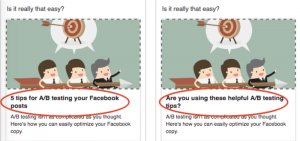Consumer reviews can make or break your brand. Columnist and Bitly senior content strategist Blaise Lucey explains how to make them a central part of your social media strategy.
 Uber drivers who get lower than a 4.6 rating often have their accounts deactivated. You’re never going to a dentist who has two stars on Yelp. Bars and restaurants have lost patrons because of low ratings. On Amazon, three stars or less can cost you thousands of dollars in potential revenue.
Uber drivers who get lower than a 4.6 rating often have their accounts deactivated. You’re never going to a dentist who has two stars on Yelp. Bars and restaurants have lost patrons because of low ratings. On Amazon, three stars or less can cost you thousands of dollars in potential revenue.
It’s fair to say that we live in a review-based economy. To drive that point home, Congress recently passed a bill, the Consumer Review Fairness Act, that’s going to protect consumers who leave negative reviews from any kind of retribution from business owners. Although, if you’re trying to threaten customers who leave you bad reviews, you’re probably already doomed.
Every star matters. A lot. More than two-thirds of consumers rely on online reviews before making a purchase, and research from mobile analytics firm Kahuna found that just by boosting a rating from two to four stars, companies increased conversion rates by 540 percent. The research also found that 50 percent of people won’t even consider downloading an app with three stars. Only 13 percent consider downloading apps with a one-star rating.
It’s easy to imagine that this carries over to anywhere there’s that iconic star rating system: product review pages, Google results, Facebook, Yelp and more.
Despite the clear impact of reviews on purchase-making, companies don’t treat them strategically. Here’s how to start making the most of consumer reviews:
1. Monitor your reviews closely
You don’t have to obsessively check every product and see how it’s rated. But if someone asks what your average rating on Amazon or the App Store is, you should know. Because, as Kahuna research shows, it really, really matters.
This gives you a meter to gauge performance as you build out review-based initiatives.
2. Ask for reviews
The people who review your business are the ones who are most passionate about it. Unfortunately, a lot of that passion can be fueled by anger. Even a few one-star reviews can tank your ratings, which means you need to think about how to garner five-star reviews to counter it.
Make reviews a cornerstone of your product onboarding experience. If you sell a physical product, put in a printed reminder to review the product in the packaging.
If you provide a service, add on a prompt to review to any follow-up communications. Apps often use in-app notifications based on behavior to target people who keep coming back.
Whatever you do, think about how you can contact customers and ask for reviews. If you have a loyalty program, ask for reviews from those customers in particular.
3. Feature your high ratings everywhere
When you have high ratings, you have customer testimonials. Feature them in your marketing collateral. Because, as the research shows, people are literally seeking guidance from the stars.
I see this a lot in New York subways. The ads that actually interest people have faces in them. Better yet, they have reviews from actual people. That’s social proof that your company is doing well. It immediately shows that you have a customer-first mentality, too.
Reviews are a marketing asset, not a reaction
Companies have to stop thinking about reviews as something that “just happens.”
When you’re reactive to reviews, you have no control over them. When you build a proactive review strategy, you can use reviews as a marketing asset.
By working with your customers and streamlining the review process, you aren’t just building brand awareness — you’re helping the bottom line.
Some opinions expressed in this article may be those of a guest author and not necessarily Marketing Land. Staff authors are listed here.
Marketing Land – Internet Marketing News, Strategies & Tips
(28)
Report Post






